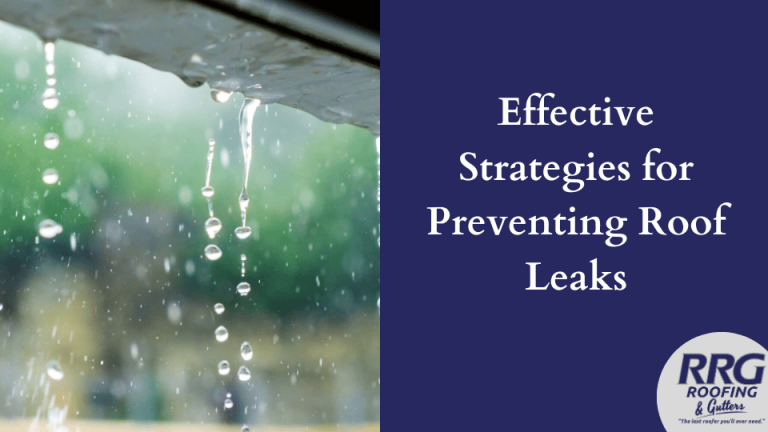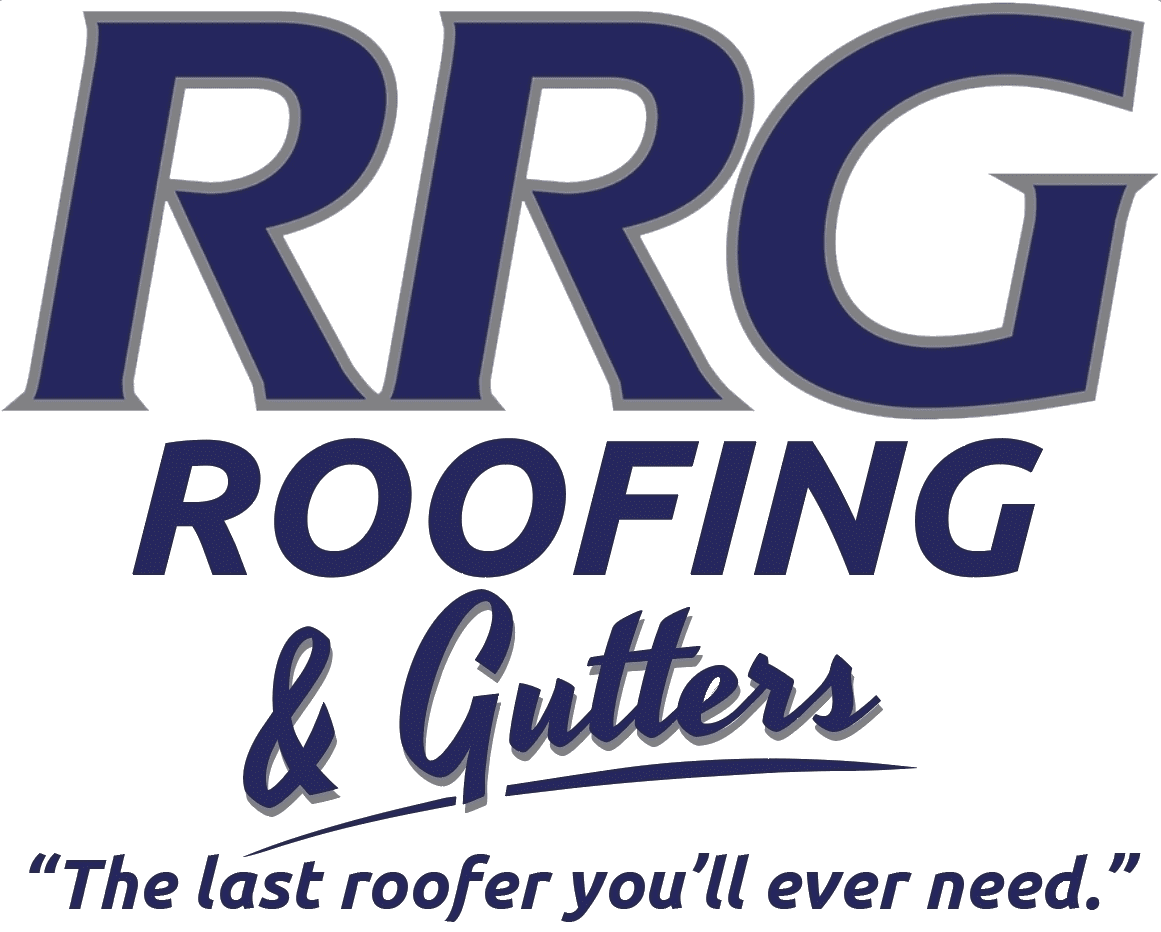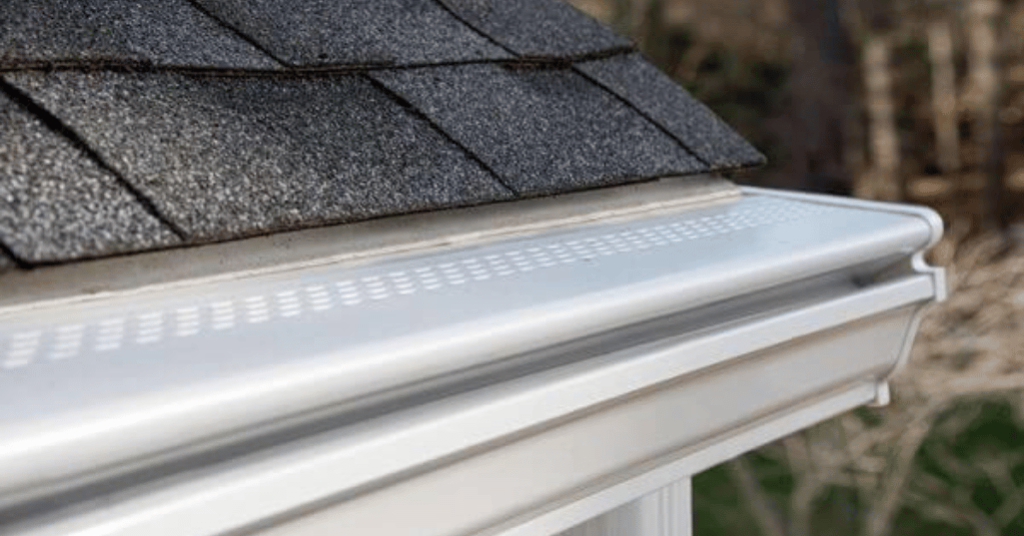Effective Strategies for Preventing Roof Leaks from RRG Roofing. A well-maintained roof is essential to keeping your home safe, dry, and comfortable. Roof leaks can lead to costly repairs and damage to your property, making prevention crucial. Fortunately, there are effective strategies homeowners can employ to prevent roof leaks and ensure their roofs remain in top condition. In this article, we’ll explore these strategies to help you protect your investment and maintain a leak-free roof.

Effective Strategies for Preventing Roof Leaks
- Regular Roof Inspections:
Routine roof inspections are the first line of defense against roof leaks. Ideally, you should inspect your roof at least twice a year, in the spring and fall, and after severe weather events. Here’s what to look for during an inspection:
- Damaged Shingles: Check for signs of damaged or missing shingles. Look for cracks, curling, or granule loss on asphalt shingles, and warping or rot on wood shingles. Damaged shingles can allow water to penetrate your roof.
- Flashing Issues: Inspect the flashing around roof penetrations like chimneys, vents, skylights, and dormers. Damaged or improperly installed flashing can be a common source of leaks.
- Clogged Gutters and Downspouts: Clean your gutters and downspouts regularly to prevent water from overflowing onto the roof. Clogged gutters can lead to water pooling, which can damage your roof over time.
- Moss and Algae Growth: If you have a shingle roof, look for moss or algae growth, especially in shaded areas. These organisms can trap moisture and accelerate shingle deterioration.
- Damaged Shingles: Check for signs of damaged or missing shingles. Look for cracks, curling, or granule loss on asphalt shingles, and warping or rot on wood shingles. Damaged shingles can allow water to penetrate your roof.
- Proactive Roof Maintenance:
In addition to regular inspections, proactive maintenance is vital for preventing roof leaks. Here are some essential maintenance tasks:
- Shingle Repairs: Address damaged or missing shingles promptly. Damaged shingles compromise your roof’s integrity and can lead to leaks during heavy rain.
- Moss and Algae Removal: If you notice moss or algae on your roof, remove it promptly. Moss and algae can hold moisture against the roof surface, accelerating deterioration.
- Sealing Roof Penetrations: Ensure that roof penetrations like vent pipes and chimneys are properly sealed. Use roofing cement or specialized sealants to create a watertight seal around these areas.
- Trim Overhanging Branches: Trim tree branches that overhang your roof to prevent damage from falling branches and debris, especially during storms.
- Attic Inspection: Inspect your attic for signs of leaks, such as water stains, damp insulation, or mold growth. Address any issues promptly to prevent further damage.
- Shingle Repairs: Address damaged or missing shingles promptly. Damaged shingles compromise your roof’s integrity and can lead to leaks during heavy rain.
- Maintaining Proper Ventilation:
Proper attic ventilation is critical for preventing roof leaks. Inadequate ventilation can lead to moisture buildup in the attic, which can damage the roof structure and shingles. Ensure proper ventilation with these methods:
- Ridge Vents: Install ridge vents along the peak of your roof to allow hot air to escape from the attic. This promotes a continuous flow of air, regulating temperature and moisture levels.
- Soffit Vents: Soffit vents are installed in the eaves of the roof to draw in fresh air. Proper airflow between soffit and ridge vents helps prevent moisture buildup.
- Attic Fans: If your attic experiences excessive heat and moisture, consider installing attic fans to enhance ventilation.
- Ridge Vents: Install ridge vents along the peak of your roof to allow hot air to escape from the attic. This promotes a continuous flow of air, regulating temperature and moisture levels.
- Flashing Maintenance:
Flashing is a crucial component of your roof’s integrity, as it seals gaps and penetrations to prevent leaks. To maintain effective flashing:
- Check and Replace Damaged Flashing: Regularly inspect flashing around chimneys, skylights, vents, and other roof penetrations. If you notice any damage or deterioration, replace it promptly.
- Re-Seal Flashing Joints: Seal any gaps or joints in flashing with roofing cement or specialized sealants to ensure a watertight seal. Pay extra attention to areas prone to heavy rainfall and wind-driven rain.
- Check and Replace Damaged Flashing: Regularly inspect flashing around chimneys, skylights, vents, and other roof penetrations. If you notice any damage or deterioration, replace it promptly.
- Gutter Maintenance:
Your gutters play a significant role in preventing roof leaks by directing rainwater away from your home. To ensure they function correctly:
- Clean Gutters Regularly: Remove leaves, debris, and any other obstructions from your gutters and downspouts to prevent water from backing up onto the roof.
- Inspect for Damage: Check your gutters for signs of damage or sagging. Damaged or improperly pitched gutters can lead to water pooling on your roof.
- Install Gutter Guards: Gutter guards can help prevent debris buildup in your gutters, reducing the frequency of cleaning.
- Clean Gutters Regularly: Remove leaves, debris, and any other obstructions from your gutters and downspouts to prevent water from backing up onto the roof.
- Professional Roof Maintenance:
While many roof maintenance tasks can be handled by homeowners, scheduling periodic professional roof inspections and maintenance is advisable. Experienced roofing professionals can identify potential issues that may not be apparent to the untrained eye and provide expert solutions. - Roof Replacement or Restoration:
If your roof is aging or has sustained significant damage, consider roof replacement or restoration. A new roof with high-quality materials can provide years of leak-free protection. Restoration options, such as coatings or overlays, can also extend your roof’s lifespan and improve waterproofing.
Conclusion:
Preventing roof leaks is crucial for protecting your home and avoiding costly repairs. Regular inspections, proactive maintenance, proper ventilation, attention to flashing and gutters, and professional roof care are effective strategies for maintaining a leak-free roof.
A well-maintained roof ensures that your home remains a safe and comfortable haven for years to come, with peace of mind knowing you’re safeguarding your most significant investment.
For more information, contact RRG Roofing at 678-326-4951. We service areas in Dahlonega, Blairsville, Hiawassee, and Alpharetta, GA.










